Driven: Porsche 911 GT3 R Hybrid drive
The future unfolds at warp factor 10 for Steve Sutcliffe in Porsche's latest racer
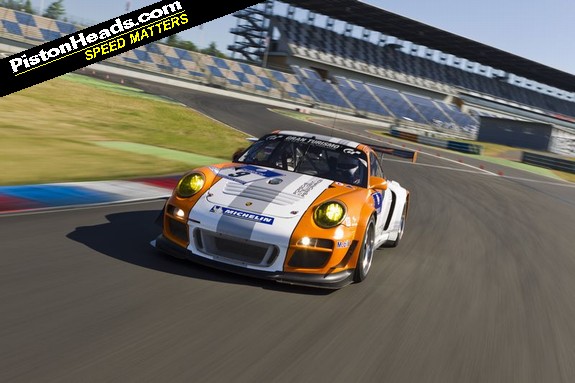
It's the noise that gets you first. The 911 GT3 R is a pretty raucous monster as it is, what with its sequential dog 'box and zero sound proofing between you and its howling flat six engine. But throw a flywheel into the mix, one that sits roughly six inches to the right of your backside and rotates at an astonishing 40,000rpm, and the sound this car makes becomes altogether more terrifying.
And the worst/best thing is, it gets louder and more frenetic the nearer the hybrid system gets to its boiling point. In order to prime the system, you need to drive the GT3 R hard for several laps on the trot to bring the electrical system up to operating speed. And as you do so, you can hear the massive flywheel spinning faster and faster, sounding increasingly like some kind of gigantic industrial Hoover that is about to go out of control.
Gradually, as the two electric motors mounted over the front axle generate more and more energy from the brakes, and then send that energy back to the flywheel, a row of bright green Christmas tree lights begins to illuminate on the left side of the dash. When each of these is lit - there are about 10 of them - that's when you know the system is ready. That's when you sit there and wonder for a second what it will feel like to unleash another 160bhp, on top of the 480bhp that the flat six already produces up near its 8200rpm cut out.
The first time you squeeze the paddle, which sits behind the steering wheel on the left and feels much like a regular paddle shift lever, the effect is both instant and disarmingly bizarre. It's not remotely like waiting for a turbocharger to do its thing; the response is far more dramatic than that.
It actually feels like you've hit some form of hyperspace button, because you don't so much as accelerate but appear at your destination a whole lot earlier than you thought possible. And it's a spooky sensation in the extreme, because the extra energy just seems to arrive out of nowhere. There's no impression of it being delivered in a crescendo; it's either there in full, or it's not, depending whether you've pulled the lever.
There are logical reasons why this should be so. Once the system is primed - ie it's at full power - and you pull on the lever, it doesn't delivery energy in a conventional way at all. Peak torque (of approximately 120lb ft) is already achieved once all the Christmas trees lights are glowing, so when you pull on the lever, you literally get 160bhp and 120lb ft delivered in an instant. That's where the "hyperspace" effect comes from - and it lasts for between 6-8seconds.
And on a track, of course, 6-8seconds is a long time to be at full power. In effect it means you are almost always able to call up extra power. Which leads us neatly into the single most impressive aspect of the GT3 R's hybrid power-train - the speed with which it can generate and redeploy its energy. All it takes, in fact, is one big stop from sixth to third gear, and that's enough energy to virtually recharge the system in full. So in effect what you are talking about is an extra 160bhp/120lb ft that's available pretty much all of the time.
On a typical lap of Brands Hatch, for example, the process would go something like this. You'd cross the start finish line at full boost - ie with 640bhp - and the system would drain itself towards the end of the straight. But the moment you hit the brakes into Paddock it would recharge, so you'd deploy the system again all the way up to the Druids hairpin - and then it would recharge partly when you braked for Druids.
On the downhill stretch you wouldn't use it, instead you'd allow it to fully recharge under brakes for Graham Hill so you could use it all the way along the bottom straight. Under brakes for Clearways you'd then get another recharge, meaning you could open it up out of Clearways and use it for most of the pit straight. There would be only one straight during the lap on which you couldn't use it, in other words, and that would be on a downhill section anyway.
The one and only downside to the GT3 R's hybrid system, of course, is its weight. Compared with a regular GT3 R (1200kg) the system adds 150kg, which means that on a single flying lap of most circuits the regular GT3 R is still quicker, just. At the Nurburgring 24h this year, however, where the GT3 Rh made its debut, Porsche discovered that the hybrid could run for a lap longer than the normal GT3 Rs. It was more efficient generally and so its 4.0-litre flat six burned less fuel as a result, which meant they could go longer between stints.
Over a 24 hour race that advantage proved critical. The only reason the GT3 Rh didn't win the event outright on its maiden outing, in fact, was because a valve spring let go during the last hour, at which point it was in the lead. The hybrid system itself was faultless, in other words.
Which means you have to assume that is it very much the way forwards - not merely for Porsche's endurance racing ambitions but for the development of its road cars as well. In many ways, driving the GT3 Rh really does feel like you get something for nothing, and if (not when) they solve the weight issues, its advantages over conventionally powered cars will only get better with evolution.
As the GT3 Rh's chief race engineer, Owen Hayes, said to me after I climbed out, looking somewhat dazed by the whole driving experience: "I regard the whole hybrid thing a bit like mobile phones from 20 years ago. Some people said they would never catch on, and look where they are now. For endurance racing in particular, that's exactly how I feel about hybrids."
And for road car use? "What's not to like about hybrid power for high performance road cars in future as well, even if there is still some way to go right now. Ask me in five years time..." he said, a great big grin beaming out across his face.
Hybrids have arrived, and how.
So how does the GT3 Rh's hybrid system work?
The GT3 Rh generates its power by taking the natural energy generated under brakes, putting this through two 60kw electric generators, storing this energy in a flywheel, and then redeploying it through the generators (which act as motors when in reverse). The electric flywheel can produce 160bhp of continuous power once it has reached its 40,000rpm operating speed; and that's what takes time and sounds so dramatic to spool up from inside the car.
Interestingly, the flywheel used by Porsche was developed by the Williams F1 team last year, but in the GT3 Rh it only derives its power from the brakes and via a small amount of drag when not under full throttle. There are no batteries as such, and power from the conventional engine remains unaffected by the hybrid system. That's largely because the power and torque developed by the GT3's electrical power-train is developed and redeployed via the front wheels, which means the GT3 Rh is effectively four wheel drive. An F1 car must, on the other hand, be rear, not four wheel drive according to the regulations.
Porsche reckons that, in future, it will be able to use the system not just to produce more power and torque at the front axle, but also as a handling aid by being able to effectively create an extra differential. By apportioning power either side at the front to wherever it is needed most, the hybrid system will, in practice, operate like an ultra-sophisticated electrical all wheel drive system, and that will make it even more efficient over a race. Or, indeed, on a wet road. The possibilities for development are almost endless.
911 GT3 R hybrid Specification:
Price: £n/a
0-60mph: 3.1sec (approx)
Top speed: 191mph
Economy: 8mpg (approx)
CO2 emissions: n/a
Kerb weight: 1350kg
Engine layout: Flat six, 3996cc, petrol + two 60kw electric motors
Installation: Flat six rear, longitudinal; electric front, transverse
Power: 640bhp
Torque: 440lb ft (approx)
Power to weight: 474bhp/tonne
Specific output: 160bhp/litre
Compression ratio: n/a
Gearbox 6-speed sequential dog
Length: 4463mm
Width: 1955mm
Height 1280mm
Wheelbase: 2368mm
Fuel tank: 100 litres
Range: 180miles (approx)
Boot n/a
Front suspension: Struts, coil springs, anti-roll bar
Rear suspension: Multi-link, coil springs. anti-roll bar
Brakes: 380mm ventilated steel discs (front); 355mm ventilated steel discs (rear)
Wheels: 18in forged alloy
Tyres: 27/65-18 front, 31/71-18 rear

For the hard of reading :
http://www.youtube.com/watch?v=qvFgADe-zG8
Just shows how much energy is otherwise turned into heat in those brakes. No wonder they glow in the dark.
Good idea to test this tech on a race vehicle where weight and performance is the key- if/when they get it working it may filter down to road cars and "normal" (affordable) cars one day, be nice to drive a modestly powered (cheaply insured/frugal of fuel) car that car still accelerate with resonable pace. Small engines are generally ok but for there woeful grunt for most real world driving situations.
How would the system work on the road where corners are not so frequent, and 6 seconds of full power is less impressive. I would have to lean very hard on the breaks when commuting to work or on the motorway to generate enough energy to spin the flywheel up to 40k rpm. If I some how managed that, would the stored energy get me more than a mile driving sensibly? Probably not. Yet I would have to lug that extra 200kg round with me all the time.
This at least makes use of the energy that is wasted under deceleration and puts it back where it is needed during acceleration. Once a vehicle is up to speed by far the largest impact on economy is drag. If incorporated correctly the fuel savings would easily outweigh the extra weight.
And if you start comparing it against vehicle battery packs then it makes even more sense. Batteries are heavy, hard to package, volatile and wear out far faster then a well engineered mechanical flywheel. A flywheel can be rapidly charged and discharged many 1000's of times without degradation to the same extent as batteries.
How would the system work on the road where corners are not so frequent, and 6 seconds of full power is less impressive. I would have to lean very hard on the breaks when commuting to work or on the motorway to generate enough energy to spin the flywheel up to 40k rpm. If I some how managed that, would the stored energy get me more than a mile driving sensibly? Probably not. Yet I would have to lug that extra 200kg round with me all the time.

Gassing Station | General Gassing | Top of Page | What's New | My Stuff

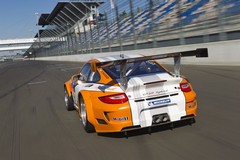

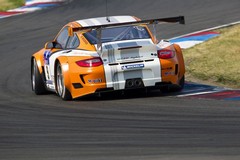
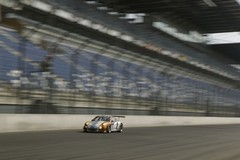
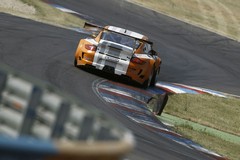
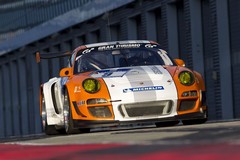
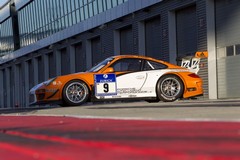
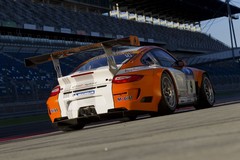
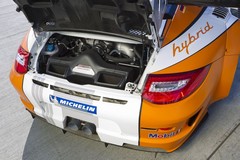



 t about 'greenies, tree huggers' etc etc ad nauseum....
t about 'greenies, tree huggers' etc etc ad nauseum.... and extra 160 bhp must be some kick in the back
and extra 160 bhp must be some kick in the back